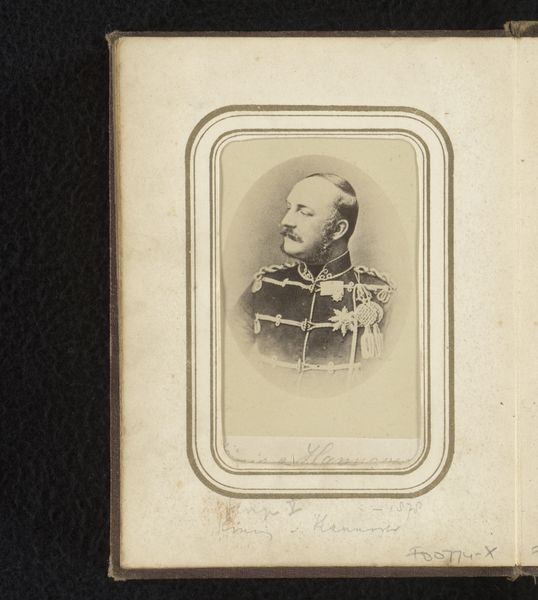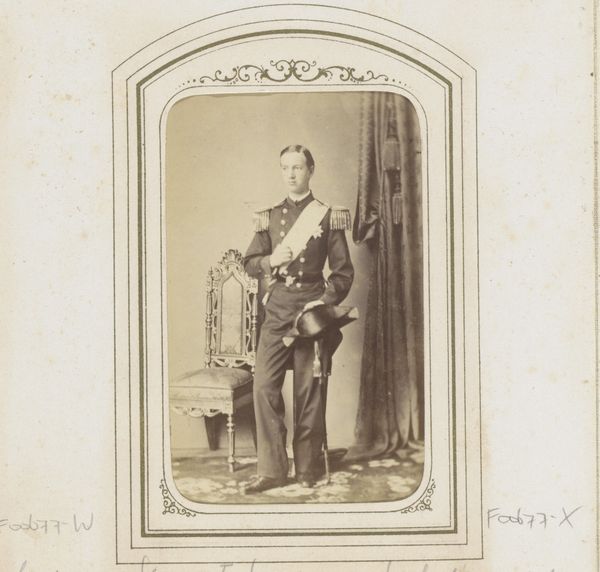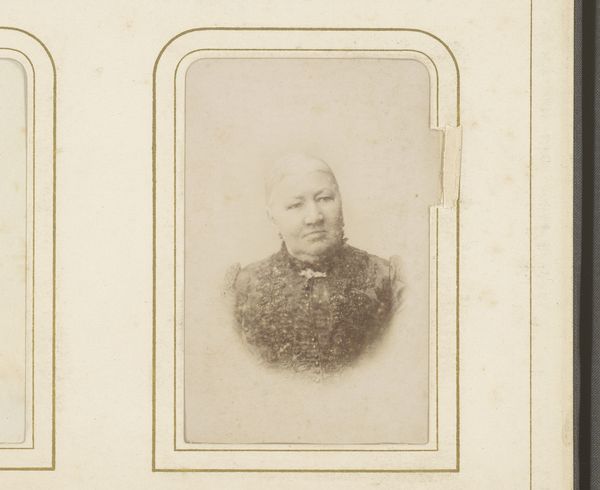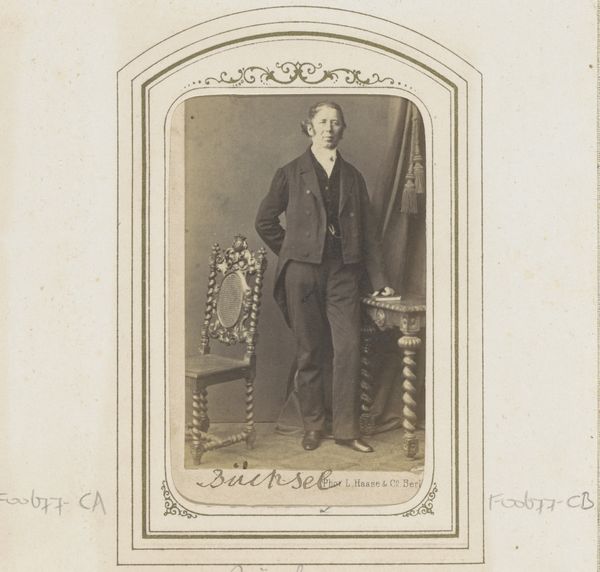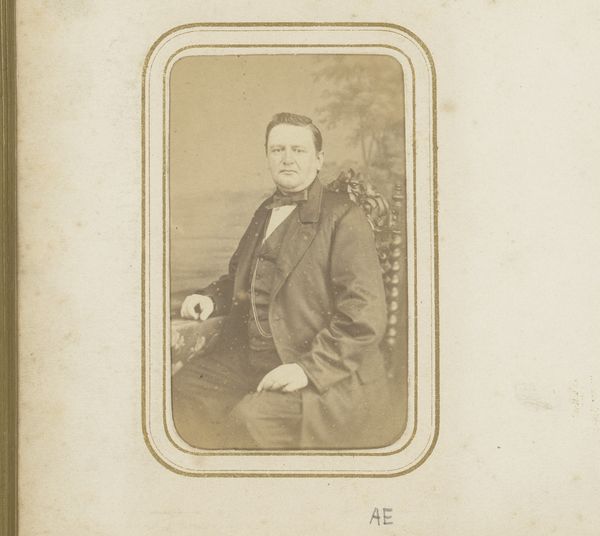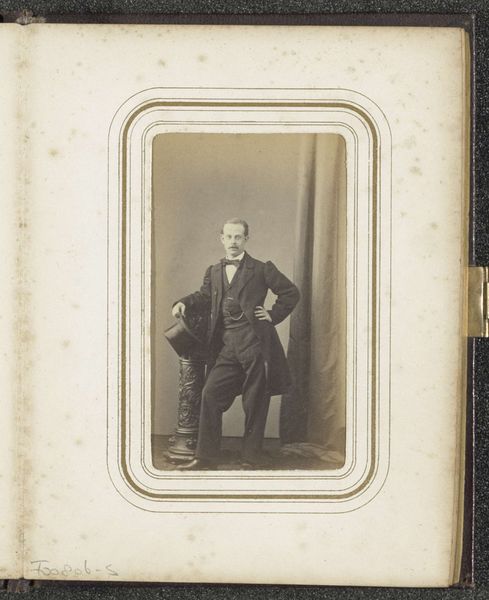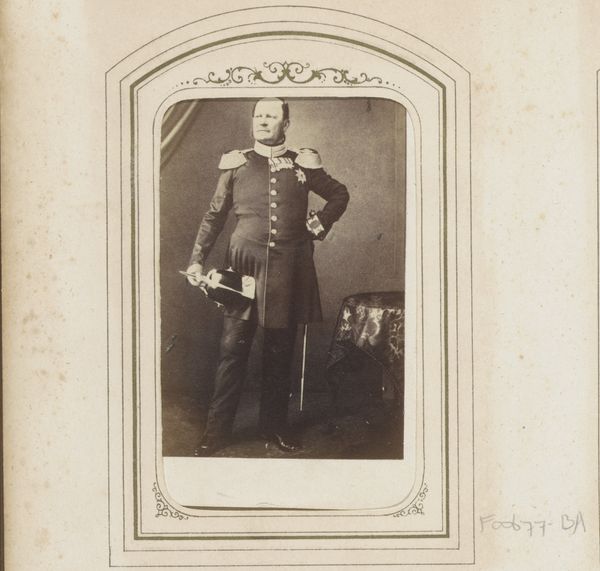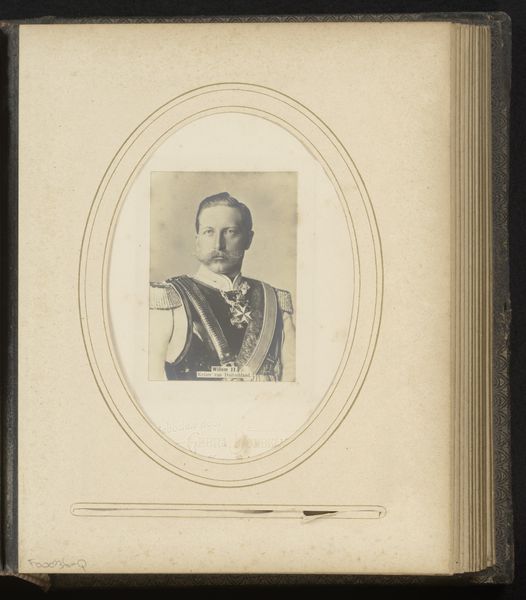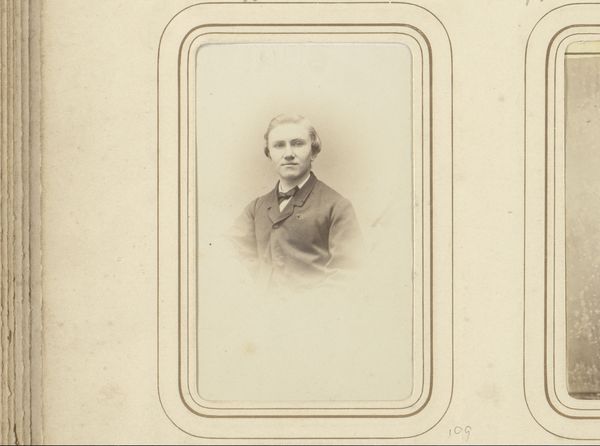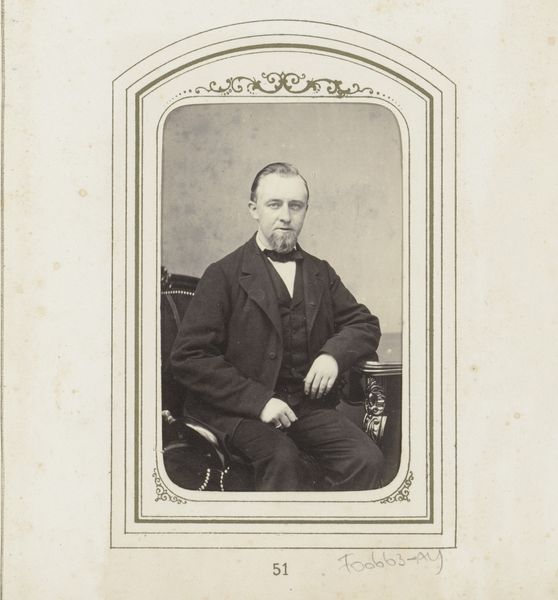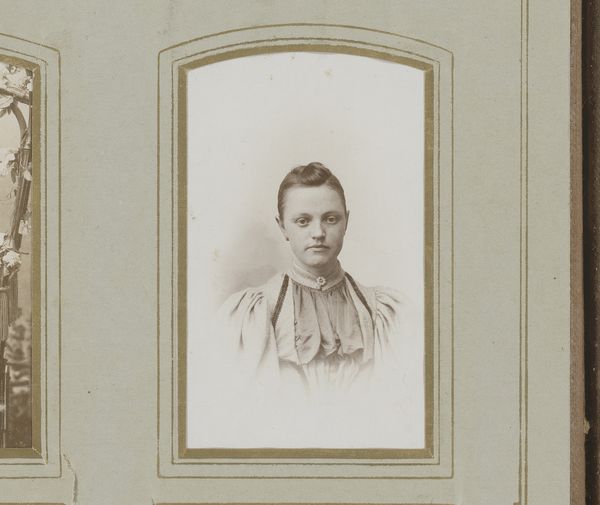
photography, gelatin-silver-print
#
portrait
#
photography
#
gelatin-silver-print
#
19th century
Dimensions: height 85 mm, width 53 mm
Copyright: Rijks Museum: Open Domain
This photographic portrait of George V, King of Hanover, was made using the 19th-century technique of albumen print. In this process, a paper support is coated with egg white and silver nitrate, creating a light-sensitive surface, which would then be exposed to light using a negative. The albumen print was among the first commercially viable methods of photography, enabling mass production of images. Though this process was more accessible than earlier photographic techniques, it was labor-intensive, requiring skilled technicians to prepare the paper and carefully control the printing process. The sepia tone and soft focus evoke a sense of nostalgia. Photography democratized portraiture, and also served as a tool for documentation and surveillance. As you consider this portrait, think about how photography changed our relationship to the representation of power, labor, and the everyday. The photograph blurred lines between art, documentation, and commodity culture.
Comments
No comments
Be the first to comment and join the conversation on the ultimate creative platform.
